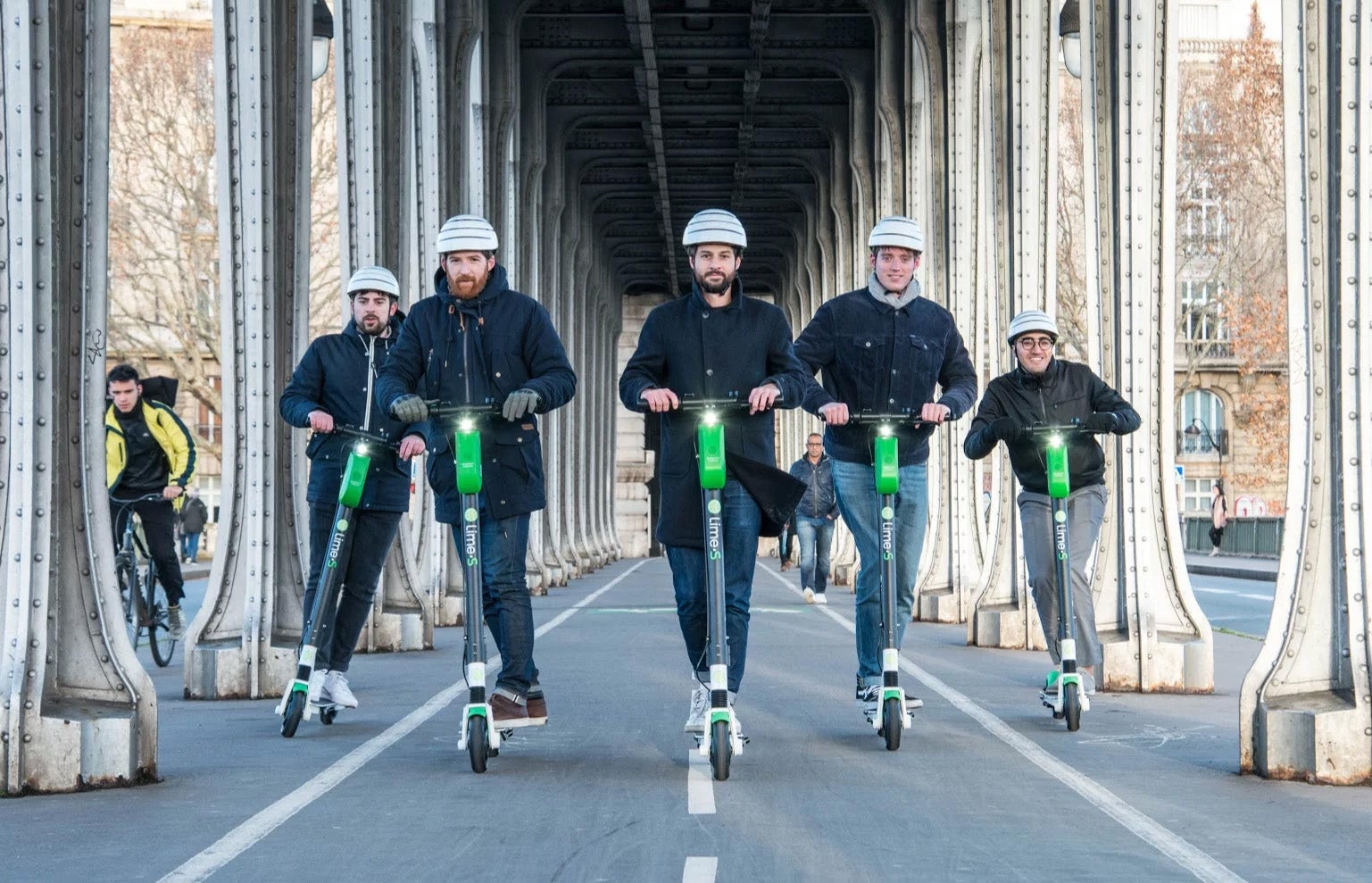Back in August, I went to Portland, Oregon, to experience the much-talked-about shared e-scooter phenomenon. Despite their outsized reputation for mayhem, I found the scooters to be extremely useful and rather enjoyable, and they completely failed to make me either angry or concerned.
Still, my scootering experiences were purely subjective, and while I always suspected the risk factor was overblown, there was no denying that out there. Unfortunately, since scooters were still so new, there wasn’t much beyond anecdotes to support either my own optimistic view or the dire prognostications of people like CNN doctor Ford Vox, who, invoked the specter of a drone chopping up a baby’s face for some reason.
Now it’s 2019, the Year of Reckoning. After hearing lots of stories, we’re finally getting hard numbers on scooter casualties, and last week the medical journal JAMA Network Open catchily titled, “Injuries Associated With Standing Electric Scooter Use.”
So who will it vindicate?
Well, the media reaction to the study’s release was swift and widespread. Certainly at first blush it appeared that scooters will indeed hasten the demise of the human race and that merely downloading a scooter app onto your phone is to submit yourself to the Darwin Awards eligibility pool. Here are just a few of the headlines that appeared in the wake of the study:
- “Head injuries make up 40% of e-scooter ER visits: Study” ()
- “Among injured e-scooter riders, only 4% were wearing helmets” ()
- “Head injuries, fractures common in e-scooter crashes, study finds” ()
- “Scooters: The Next Public Health Issue?” ()
This is certainly scary, highly clickable stuff. But headlines aside, what did the study actually study, and what were the actual findings of said study? Well, from September 1, 2017 to August 31, 2018, researchers looked at people with scooter-related injuries who reported to one of two emergency rooms affiliated with the Ronald Reagan UCLA Medical Center and UCLA Medical Center–Santa Monica. They then looked at how—and how badly—these people fucked themselves up. (Sorry for the medical jargon.) Here’s what they found:
- During the study period of one year, 249 patients went to the emergency room due to scooter shenanigans, mishaps, and other assorted mishegas;
- Of those, 234 of them—that’s 94 percent—were sent home (though sadly there’s no data on how many of them returned home via scooter);
- The remaining 15 patients were admitted;
- Of those 15 admitted patients, two (2) were injured so severely that they had to go to the ICU.
In other words, over a one-year period in a densely populated region of Southern California, someone went to the emergency room with a scooter-related injury maybe every couple of days. And while two severe injuries is two too many, the overwhelming majority of them weren’t particularly serious.
This is scary….why exactly?
Of course, to really put these numbers in perspective and get a sense of just how dangerous scooters are (or aren’t!), it helps to know two things:
- The total number of people who are reporting to these emergency rooms for any reason;
- The total number of scooter trips people are taking in the area being studied.
Frustratingly, the study seems to address neither of these stats. However, a quick googling reveals that the Emergency Departments of both and each treat around 50,000 patients a year. So out of 100,000 people who, combined, wound up in the emergency rooms, fewer than 300 of them were there because of scooters. As for the number of scooter trips, Santa Monica’s scooter pilot program allows for a from the various operators, and a scooter in a major market is likely to see . That means it’s entirely possible Santa Monica alone saw well over three million scooter trips over the course of the study.
So basically, three million scooter trips, two severe injuries. Still scared?
The lack of context in the study for these injury statistics is vexing, but rest assured it includes ample helmet data for the pearl-clutching set. (Scooter riders tend not to wear helmets, for the same reason most of us don’t change into work boots before we hop on the escalator.) Indeed, in the , Frederick P. Rivara writes:
We are not troglodytes trying to stuff the genie back in the bottle. […] Action, however, is needed by a number of players. The Consumer Product Safety Commission should test different helmets for these various devices and label them according to the vehicle in which their use is appropriate. Just as helmet manufacturers responded to the increased demand for bicycle helmets with new and attractive products priced very affordably, these manufacturers should develop and promote use of helmets appropriate for electric scooters and bikes. The companies renting both motorized and unmotorized 2-wheeled vehicles should make appropriate helmets available; failure to do so is like a car rental company renting cars without seat belts. Cities can and should require provision of helmets as part of their contracts with the companies (yes, the cities do have contracts with the companies). We as purveyors of health care and public health should partner with these other players to ensure that these companies are not creating a new public health problem.
But why? In a society conditioned to place excessive faith in helmets this may sound compelling, but in truth there’s little basis for any of it. Rivara writes: “Bicycle helmets have been shown to reduce the risk of TBI by as much as 88%,” and his basis for this is his own study from 1989.
However, this isn’t particularly convincing, as the study has since turned out to be so problematic that even the as it doesn’t meet the standards of the federal Data Quality Act. More importantly, , and don’t @ me on that. So while Rivara might not be a troglodyte trying to stuff a genie in a bottle, he is a troglodyte trying to make everyone wear foam hats for no reason, which is arguably a lot worse.
But the big flatulent pachyderm in the room, as usual, is cars. Santa Monica saw in 2017; for this. Meanwhile, scooters help reduce driving. In fact, during its scooter pilot, the found that 34 percent of locals and 48 percent of visitors surveyed replaced car trips with scooter trips. This is extremely promising, for the simple reason that fewer car trips means fewer deaths.
Are people in Santa Monica also replacing their car trips with scooter trips? Well, we don’t have the numbers yet. But now that we know how many people went to the hospital because they tripped over a scooter in the past year (five, in case you’re wondering) and how many people dared to ride them without helmets (most of them, because come on, people), maybe someone could do some kind of study on who’s scooting instead of driving.
Now that would be useful.


